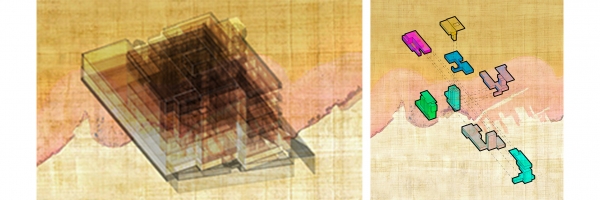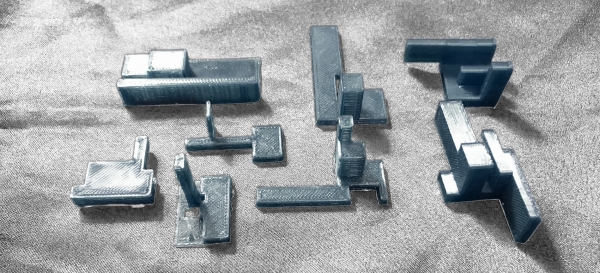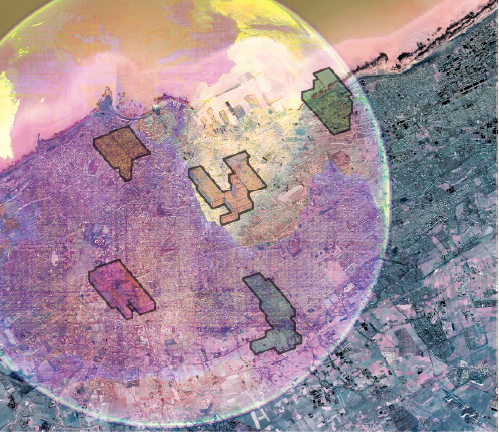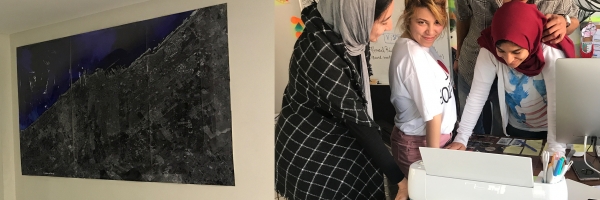
I am so proud, again, of all the participants as individuals and as teams. There are a few other notable teams that were crucial in realizing these project work: ZERO1, L’Uzine, and the American Consulate in Casablanca.
I want to thank them for their help in supporting the program from start to finish and for inspiring the project that I am currently wrapping up as part of my exchange. This was a team effort.
---
In particular, the energy and excitement of L'Uzine have been my muses for this project.
The same line repeats in every iteration of the project proposal leading up to my departure to Morocco, “My personal project will be an architectural scaffolding for the participant projects…” Familiar neither with the organization nor with the participants, I imagined I would build a structure or design a space that could host each of the participant project prototypes.
But over the course of the workshops and as the participant projects developed, I realized that this scaffolding already existed; every day, the flurry of events and excitement, the rhythms of dance and meditative motions of textile design, the focus of the camera lens, the reverberations and translations of music, the flittering of fabrics, the echoes of philosophical conversations, and the fun that moved across, up and down, and around the building of L’Uzine.
Raucous laughter and decisive actions emanate from the 1.5th-floor administrative offices. Delicious smells waft up the stairs from the kitchen where Fantom and Fatima prepare a meal for the staff and visitors to eat together, pausing between energetic spurts of technical management, deconstruction, shopping, posting, meetings, and, of course, answering seemingly incessant questions from guest program coordinators, like me.
Zineb Haddaji’s responsive, positive, and witty perspective kept the program and the projects moving within and beyond office hours. Maria Daif’s infectious enthusiasm gave context to the projects. The care with which Nadir Houboub considered each shot, sequence, and composition and the poetry of each image by Ahlam Maroon represented our program so eloquently. Hamza Lyoubi's even and careful timing and articulation, and Abdessamad Bourhim’s intense and speedy technical execution bolstered our work. The workshops and exhibits also would not have been the same without Dounia Jawhar's calming presence, Sabrine Hakim's insightful questions, Abdessamad Noudirate's energy and resourcefulness, and Kristi Jones’s indispensable insight and support. And, last but not least, Fouad was always ready to open a door.

The concept for my project came from the recognition that L’Uzine — as a building and organization — is a scaffolding that can and does support not only prototypes but ongoing work on the critical questions and concerns expressed and explored by the participant projects. L’Uzine’s heart and muscle are already doing the inspiring work of community building, recognition, and representation. Its body is filled with diverse projects and programs that display, disclose, and question.
L’Uzine’s building is not only a center of culture, it is also a cultural puzzle. It is a place where mega-cultures, mass-cultures, and sub-cultures connect, coincide, collide, and fuse together. Its spaces are allocated to music, dance, theater, performance, photography, painting, and design, and its circulation spaces host encounters among artists. The cultural puzzle re-imagines the way the building is subdivided — grouping spaces to create variegated cultural portraits through a diversity of disciplines and sensory stimuli.

This is a curatorial concept:
Three puzzle pieces represent the heart and muscle — L'Uzine's staff — the Heart, the Arm, and the Spine.
Five puzzle pieces represent cultural exhibitions, inspired by the Rhetorical City participant projects: each one uses a collection of sensory spaces to immerse visitors in a sub-culture — each organ perceiving, processing, and interpreting different aspects of the exhibit.

Meanwhile, the Cultural Canvas & Composites concepts are a fusion of the American Arts Incubator model and some of the incredible work that is already underway at L’Uzine.
AAI bolsters the growth of artists through the development of art projects addressing questions of community, technology, and entrepreneurship. Shamsher Virk and Maya Holm provided an incredible foundation, and go above and beyond in coordination to support this process. And the Department of State and American Consulate were so generous in their support of the program and participation in its exhibition event — especially Stephanie Jensby, Salma Benbouia, and the Consul General, Jennifer Rasamimanana.
Artists explore and grow at L’Uzine — some participate in workshops and projects for fun, some become employees of the organization, and some become recognized city-wide, nationally, and internationally for their craft.
The Cultural Canvas & Composites concepts underscore the role that L’Uzine already plays as an incubator by providing concepts for small and large, singular and serial, physical and digital interventions.

I want to return for a moment to the basis of this project — asking questions about empowerment through mapping and data collection and representation. Among the great concerns with power, data, and mapping are disempowerment, misrepresentation, and obfuscation, respectively. However, perhaps if we understand the systems by which these are constructed, we can become not only critics of but also activists within them, transforming the criticality that sometimes seems external to societal structures into something that is intrinsic and inherent to societal growth and development.
Perhaps social entrepreneurship is an exquisite product of opportunities for open self-expression and public conversations about convictions. And, finally, perhaps this constructive-criticism-turned-social-entrepreneurship is a form of love that can ultimately make a positive impact on our families, friends, neighbors, and communities.
---
I can't wait to see what forms the AAI participant projects take as they develop in the future and to see what configurations L'Uzine might take as it continues to do its incredible work
